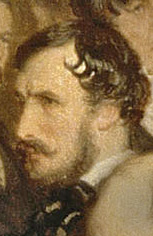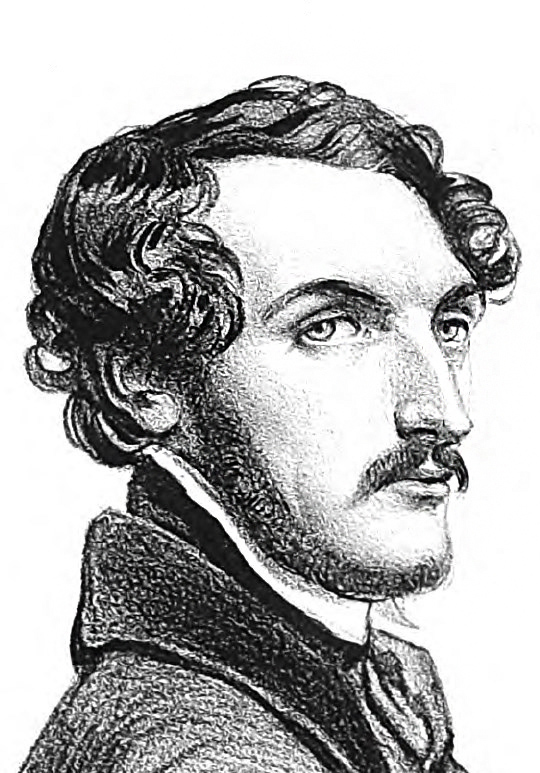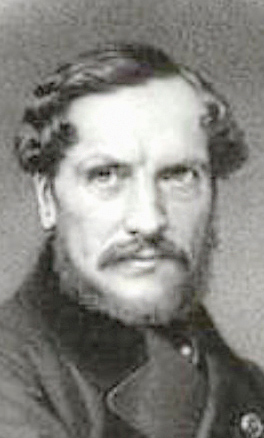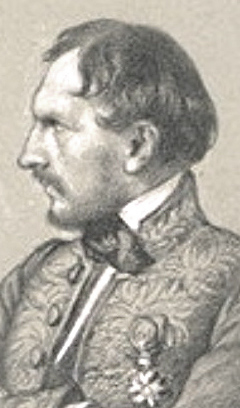Francisque-Joseph Duret (1804 – 1865), sculptor
1st image: Soirée; 2nd: by Alophe (1840); 3rd: by Lemercier (c.1854); 4th: by Heim (1856).
Francisque Joseph Duret (his first name refers to his family’s Spanish origin) is one of three sculptors in this painting. Where de Nieuwerkerke16 used his sculpting abilities to start his Beaux-Art career, and Pradier's03 sensuous chic marble nudes competed with his bohemian lifestyle, Duret dedicated his life to monumental statues, living a quiet married life without being surrounded by mistresses and scandals.
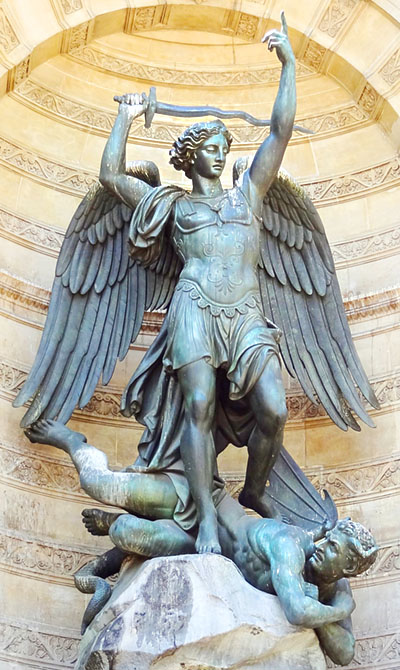
You can spot many of Duret’s creations on a tour of Paris. He created Saint Michel terrassant le demon at the Saint-Michel fountain; the telemons at Napoleon’s tomb at the Invalides (designed by Visconti09); you can spot his Archangel Gabriel at the Madeleine; his statues at the Circque d’Hiver; Tragédie and Comédie at the Théâtre Francais (presently in Toulouse); the Vénus fountain in the Champs Elysées gardens; La Loi at the Palais de Justice, and numerous ornaments at the Louvre, which he made based in close cooperation with architect Duban60.
His sculptures, over fifty in total, include depictions of Chateaubriand, Molière, and Visconti. Duret's work graces the tombs of other vendredi-soirée guests like Halévy19, and Ponchard25 on the Père Lachaise and Montmartre cemeteries.
Francois received a classical education: from his father up to his early death in 1818, then by baron Bosio: premier sculpteur du Roi. A gold medal in 1823 allowed him to study five years at Bosio’s workshop of the French Academy in Rome. Despite his traditional sculpture training, he showed his independence by authoring imaginative works, and experimented with lost-wax modeling.
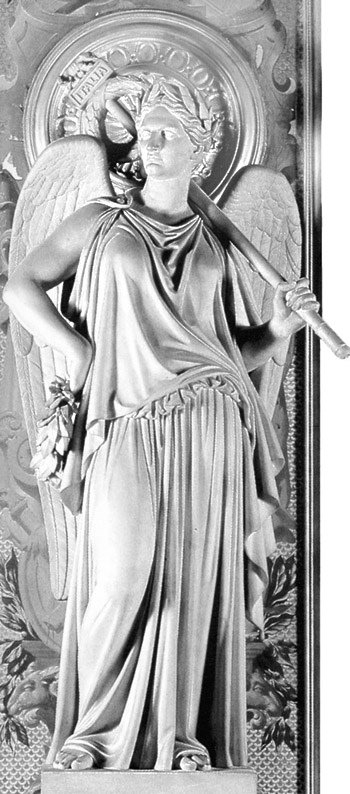
His 1829 piece, Mercure inventant la lyre, became an instant success at the 1831 Paris Salon, purchased by King Louis-Philippe for the Royal Palace. Damaged during the 1848 revolution, it was later recast in bronze and now stands at the Opera.
His most celebrated statue, Neapolitan Fisher Dancing the Tarantella (1832), solidified his reputation and secured commissions from royalty and the government. He was elected member of the Academy des Beaux-art in 1843.
In 1850, Duret married Clémentine Turac, granddaughter of Luigi Cherubini (teacher of Halévy and Auber). Newspaper Daguerrotype jokingly noted that he now “fathered a new oeuvre.” He chose family life with their two daughters over a bohemian artist lifestyle.
Even the critical Viel-Castel43 had no complaints about him.
Duret joined de Nieuwerkerke’s soirée’s at least twice: on June 7, 1850, and on December 19, 1851. The small Chevalier-level Légion d’Honneur button visible in Une Soirée au Louvre predates his promotion to Officer in July 1853, visible at Heim’s drawing from 1856. Unlike many of his peers, Duret managed to escape caricature by Eugène Giraud. He probable had no desire in late-night tea and smoking at Viel's atelier.
In late 1864, Duret fell ill, likely due to heart disease, and died on May 26, 1865, leaving behind his widow and two young daughters. Eugène Guillaume crafted his tomb, located in section 19 of Père-Lachaise cemetery.
